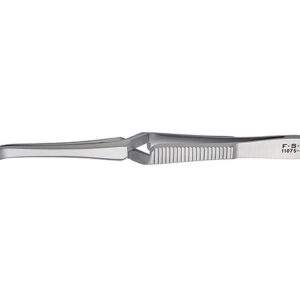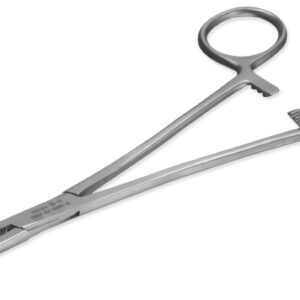Have you ever pondered the question, “what exactly is Data Science”?
Why is it becoming increasingly popular? Or what even advanced analytics, or data mining for that matter, mean?
Either actively or passively, we have all even been integrating data science in our daily lives, which makes it all the more important for us to understand. To that end, let’s try and put things in context, you agree that all our decisions, be it consequential or minor, are based on available information analysis.
For instance, when you are doing something as mediocre as crossing the road, you automatically start gathering and processing visual data about the stream of traffic, signals around you, the distance between both ends of roads, etc., before deciding to move. Data Science is not much different than this.
How?
That’s exactly what we aim to explain in the following article.
Data science in laymen’s understanding can easily be classified as a mere extension of human behavior. Which is not too far-fetched because data scientists do exactly what you did while crossing the road. They gather, organize, analyze, and turn the raw data into intelligibly visualized information to assist and augment our decision-making abilities, which is not possible without an efficient record-keeping or data-generating system. Particularly if the data in question is huge that exceeds our comprehension capacity in terms of structure and power. That is where modern computing and analytical constructs come in the frame. (Blei and Smyth, 2017)
All the tools, methods, algorithms, processes, and hardware developments that data science employs in its implementations work towards one central mission – “people make better decisions when they consume better information” derived from a general success barometer.
The topic of today’s article Demystifying Data Science is especially focused on helping the aspiring data scientists and data-curious individuals to understand the essence of data science. We will be explaining exactly what data science is, how it works, basic insight on the processes and applications of data science, data scientist skills, and the future of it. All in all, we will cover everything it takes to demystify the concept of data science for you.
What is Data Science?
Before anything else, you need to understand the three most commonly used terms of data science, which need separate clarification due to their seemingly similar significance outside the technical world.
Data: It is the unorganized and unstructured blocks of garbled information (data).
Information: In data science, the information refers to the knowledge extracted from the raw data after it has been organized, filtered, analyzed, and presented in a visually readable format.
Insight: Insight analyzes the readable information to understand and improve any given situation by making accurately informed decisions.
Data science happens from the process of data gathering to gaining insight. It is all about turning crude data into extremely useful insights to be able to make conversant decisions and solve analytically complex problems. (Sivarajah, Kamal, Irani, and Weerakkody, 2017)
This may sound simple, too simple for you to be wondering; that’s it? Well, yes, that is it. You have grasped the gist of data science – which is more than sufficient to get you started on your journey to learn about this multidisciplinary field.
Data science uses theoretical as well as an experimental scientific approach, algorithms, and specialized techniques to draw insights from composite and non-composite data. Data science uses advanced techniques, especially concerning data mining and processing, to utilize the data to its possible extent.
This field of science devotes its advancement in the search, study, and development of secure and efficient methods that can be used to analyze massive data and extract useful information. Data science works in unity with mathematics, statistics, computation, analytics, programming, and data mining; hence it is a multi-disciplinary field.
The people performing all of these fascinating tasks are called data scientists, professionals with exceptional technical skills in analytical data. Data scientists also have superior command at various programming languages along with construction and deconstruction of data. The common responsibilities of most data scientists comprise of data gathering, organizing, filtering, reading, and formatting to enable the prediction and manipulation of just about every type of data.
Data Science Working & Processes
Since data science is a multidisciplinary and intricate field, it works through a systematic balance between several elements, e.g., scientific methods, different processes, technology, and algorithms to gain targeted insight into the structured data. (Fridsma, 2018)
To understand the joint mechanism of data science workings, you need to understand a few steps that the data science process takes to finish a specific project.
1. Identify The Problem
For you to device a solution, you first need to know what the problem is. And to identify any problem in any situation, you need to ask relevant questions. Asking a question to identify the problem is the first step in the data science process.
2. Collect the Pertinent Data
After identifying what the problem is, the next step is to collect all the appropriate data that will lead you toward a solution. This data is unstructured and raw at this stage. It may come from as many sources as you need until it seems adequate to generate useful insight.
3. Data Exploration
This is the most time-consuming stage, for it takes data organization, cleanse, filter, arrangement, and compilation of the whole data that you gather. Even highly skilled data scientists spend 80% of their time on this step. You need to be sure of every data set before keeping or discarding any irregularity.
4. Data Modeling
After detailed exploration, your data is now ready for analysis. However, the information extracted at this stage is only hypothetical and requires a data scientist to test and justify this hypothesis. Which is only done through data models.
Data modeling is the process of building models of the complex data that can predict and inform about the expected as well as unexpected results. It involves text, mathematical equations, and symbols to turn the available data into a visual document.
This is the point where all multidisciplinary elements like machine learning, algorithm, technological & scientific methods, and statistics/probability comes in picture.
5. Communicate Results
It is an extremely important part of a data scientist’s job because not everyone can understand and make sense of the results acquired by the model. The most effective mode to communicate the solution is by presenting it in visual information format, e.g., info-graphs instead of just numbers or text.
Data Science Application
Did you know that out of all the data available in the world today, 90% of it was created only in the last couple of years? This is an enormous amount of data for just two years. Based on this, it is estimated that the data amount is likely to reach 44 zettabytes (44 trillion gigabytes) by the end of 2020.
So what do we do with all these massive amounts of data? Easy! There is not a field today that is not utilizing data, whether Big Data or smaller datasets. People from every field, such as healthcare, journalism, political science, innovation & technology, marketing, etc., are working day in day to come up with effective solutions using data.
Here are some of the most common application examples of data science:
Web Recommender Systems (technology)
Have you ever paused to think about all the relevant recommended items displayed on your screen every time you shop online? Take Amazon, for example, it is used all over the world, and the recommended nuance is rather hard to miss on it. Have you ever asked yourself, how does Amazon know which particular item to show you from millions of other available items? The answer is by using data science.
Data science can develop your behavioral patterns and trend from your past activity in a blink! And it is not just Amazon; literally, every leading tech company such as Netflix, Twitter, Facebook, Google, etc., is using data science to create a recommendation system to improve not just their business but also enhance user experience.
Marketing
Data science has emerged as a game-changer for the business arena through the successful marketing strategies developed by using data science. Here are some of the exemplary ways that people used data science to optimize their business marketing. (Saidali, Rahich, Tabaa, and Medouri, 2019)
- Budget optimization
- Targeted marketing
- Strategizing respective customers, both the old and the new.
- Advertisement alignment with different consumer segments
- Preempting and influencing new seasons
- Data analyzing through social platforms.
Data Scientist Skills
Although, skills needed to become a successful data scientist vary from field or company, just as the responsibilities, there still are some common technical and non-technical skills that most data scientists are likely to possess.
Below is the list of specializations that you need to be good at if you are aiming to make a career as a data scientist:
Statistics and Mathematics
As we have established above, the data science process makes it mandatory for data scientists to create different statistical models. To be able to do that, you have to be highly skilled in mathematics, probability, regression, statistics, multivariable calculus, algorithms, linear algebra, etc.
Programming Languages
Without programming expertise, you do not stand a chance in the world of data science. It is as simple as that. The commonly used programming languages that any data scientist should master include Python, SAS, SQL, and R.
Data
This one should go without saying, but omitting it would not have helped you either. A big part of the data scientist’s job is based on knowing the types of data, appropriate extraction methods, and choosing the correct individual parameter. Overall, data scientist spends most of/her time organizing and exploring data to create different models and gain insight from it.
Communication skills
Not everyone you communicate with in your professional capacity understands the technical language of your task. You should be capable of explaining your discoveries, method, processes, etc., in an easy-to-understand manner. It is especially important when it is time for you to communicate your results. Your insight should tell a “story” rather than complex jargon punctuated by lots of numbers
Future of Data Science
There was this phrase published in Harvard Business Review that went something like “data scientist is the sexiest job of 21st century”. It instantly became viral, adding to the endorsement of its truth. But is it true? Given that, that we are not even through the first quarter of this century. It is debatable, especially if the trend of automation is to be taken into consideration. All of the jobs that we see today were not here 20 years ago, similarly many of the existing jobs may not make it into the future.
Granted, technology plays an important role in data science, and if anything can be claimed for the whole 21st century, it is that technology is here to stay – which makes data science stay by association, automation, or not. You cannot fully eliminate human intervention when it comes to gray areas; decision making, as was established above, is central to data science, has a lot of gray areas.
References
- Blei, D.M., &Smyth, P. (2017, August 15). Science and Data Science. Proc Natl Acad Sci U S A, 114(33), 8689-8692. http://doi.org/1073/pnas.1702076114
- Kamal, M.M., Irani, Z., Sivarajah, U., &Weerakkody, V. (2017, January). Critical Analysis of Big Data Challenges and Analytical Methods.Journal of Business Research, 70, 263-286. https://doi.org/10.1016/j.jbusres.2016.08.001Get rights and content
- Fridsma, D.B. (2018, January 1). Data Sciences and Informatics: What’s in a name?. J Am Med Inform Assoc, 25(1), https://doi.org/10.1093/jamia/ocx142
- Medouri, A., Rahich, H., Saidali, R., & Tabaa, Y. (2019). The Combination between Big Data and Marketing Strategies to Gain Valuable Business Insights for Better Production Success. Procedia Manufacturing, 32, 1017-1023. https://doi.org/10.1016/j.promfg.2019.02.316












